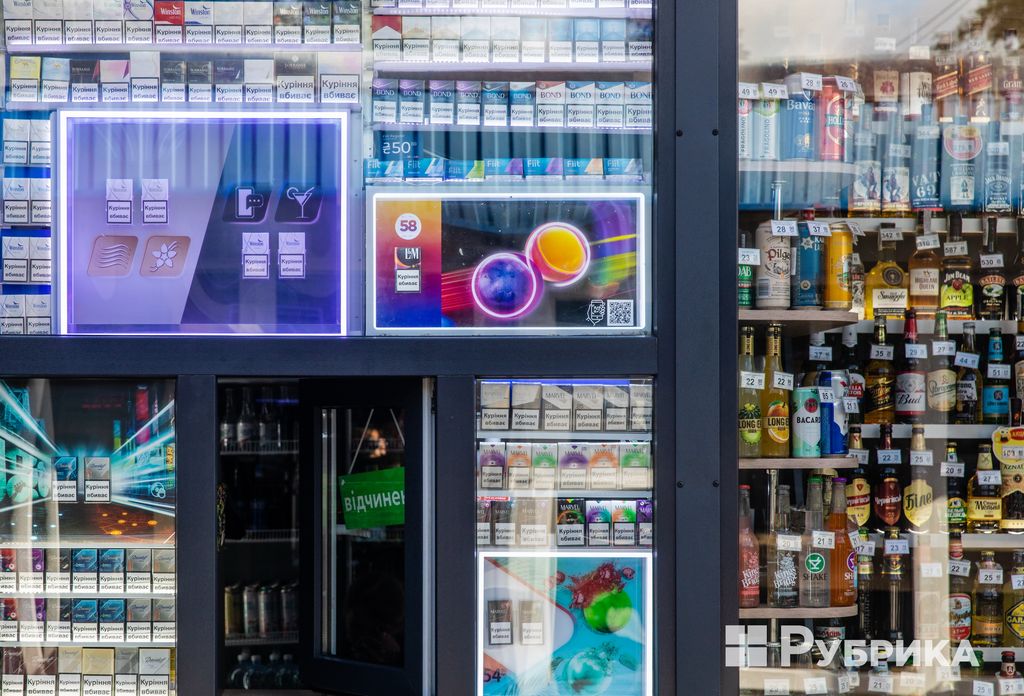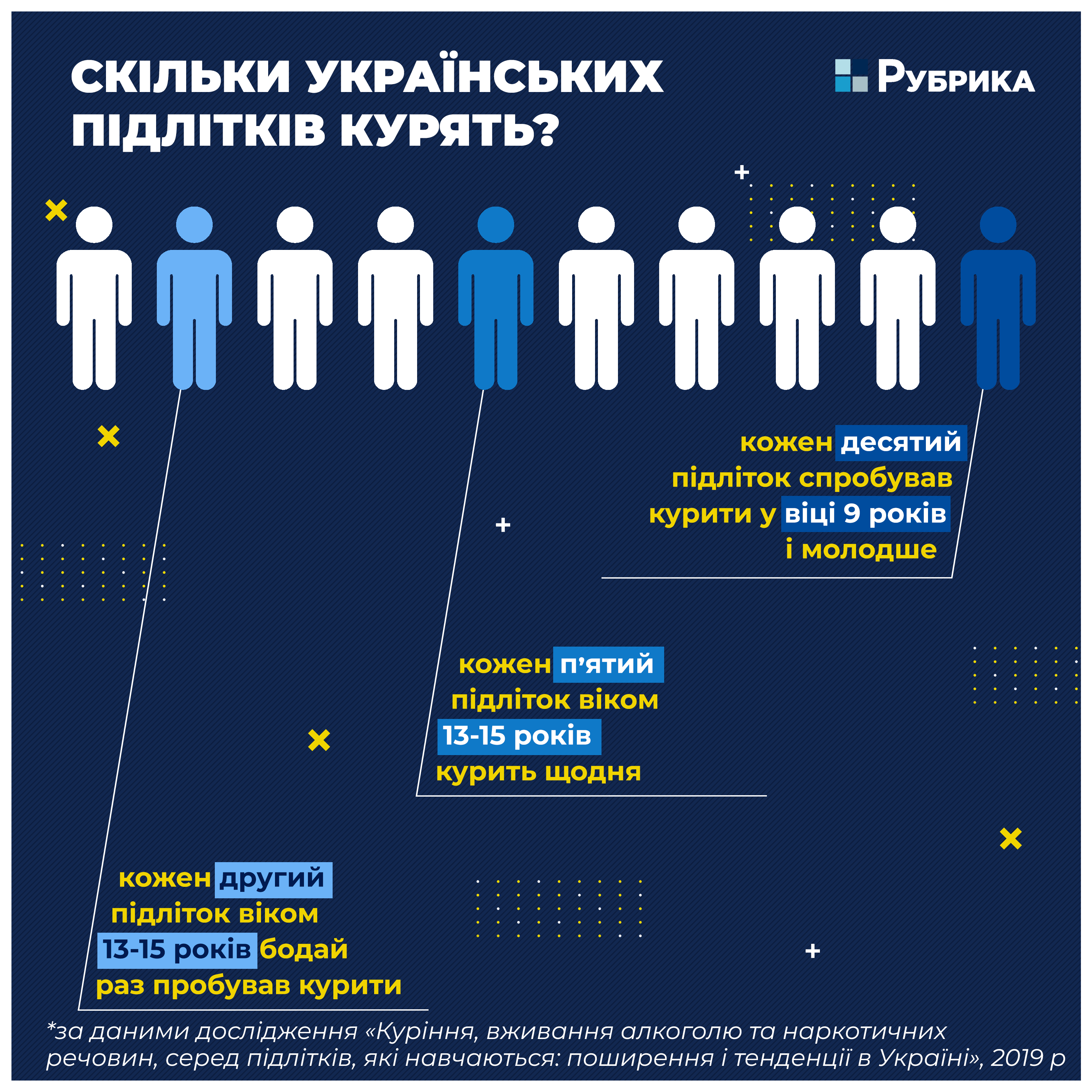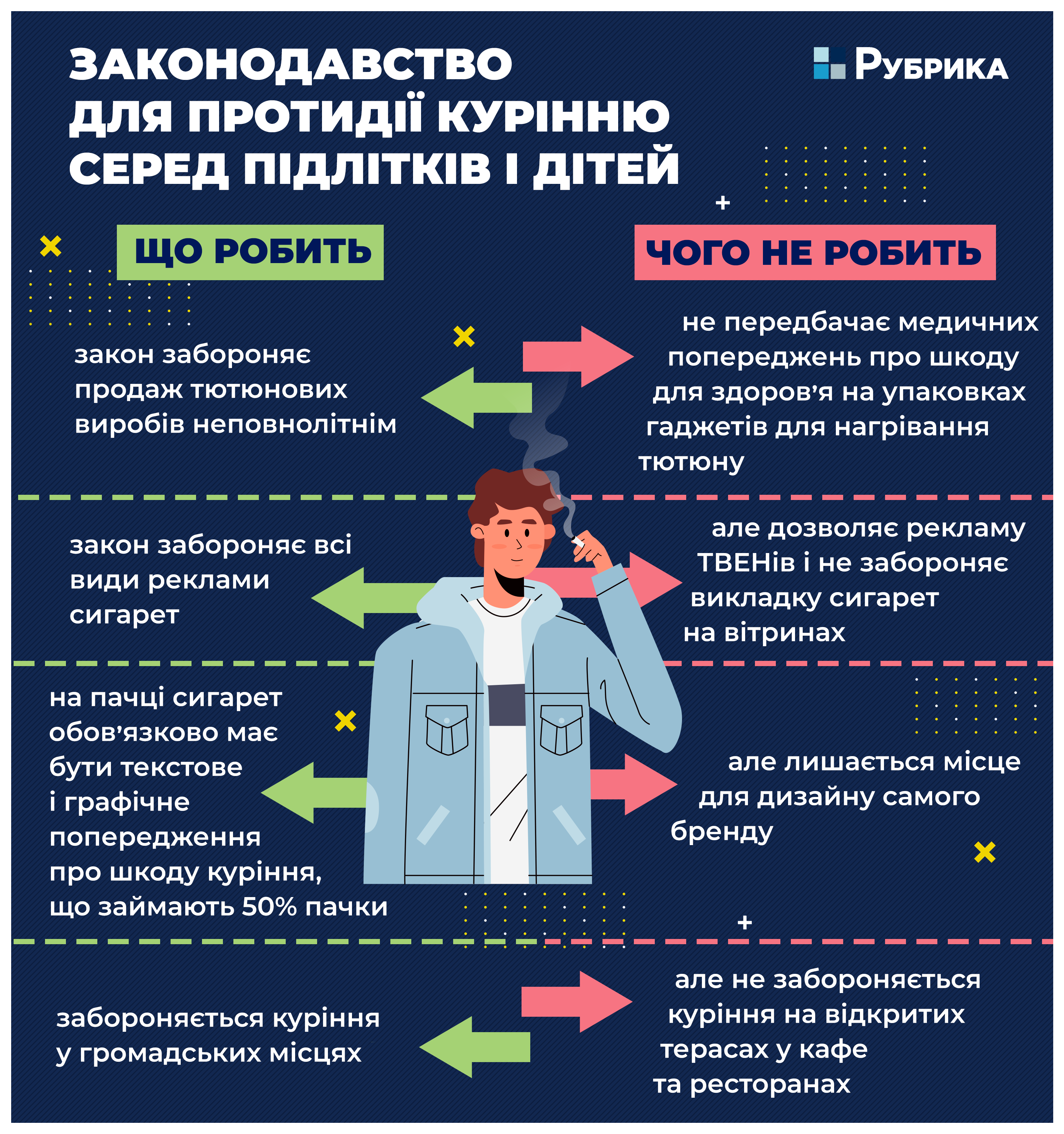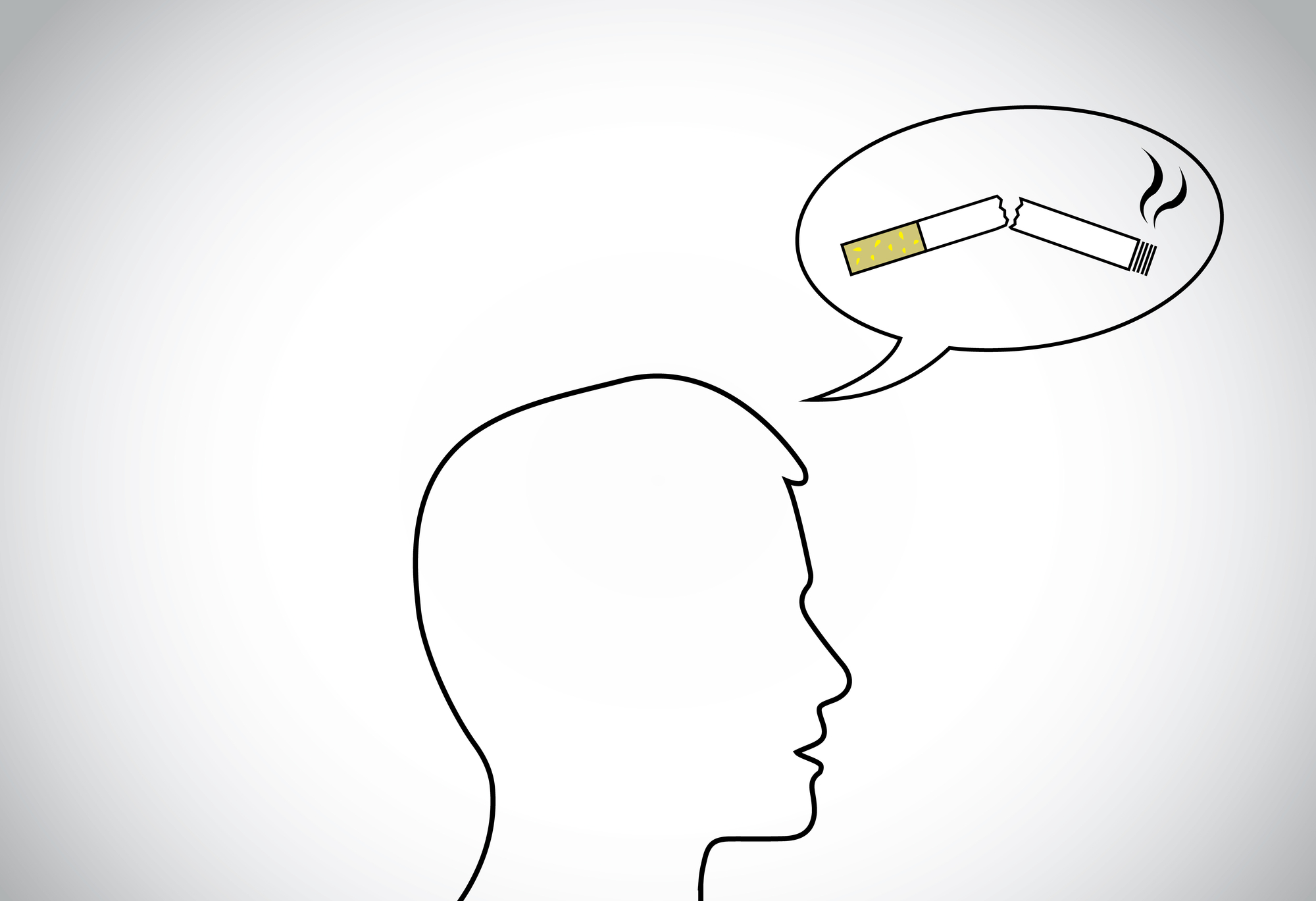
Rubryka explains what smoking is besides the "adult habit," why children should not be responsible for the first puff and how to help young smokers get rid of nicotine addiction.
All adults were children
Anna is nice and beautiful. She is 43, a translator, a book lover, and a former smoker. She doesn't like to recall her experience and says that this characteristic is typical for adults. They say that is why they condemn teenagers, as they once were.
"It all starts at 14. You just try, because you're interested, and then everything that you don't want to learn in chemistry lessons works," says Anna.
She recalls she started smoking at 14 and continued until 38. She couldn't quit smoking for three years. The woman says, not that she tried hard, but rather always thought that her health was not in the state she would like to see and feel, but giving up long-term addiction was difficult.
"It turned out that I was constantly working with people who had lung problems, heart issues… After meeting them, I smoked with thoughts about what the new puff would lead to. I still smoked a lot. And then somehow I woke up in the morning after a celebration, I felt a horrible taste in my mouth again and realized that I didn't want that anymore. There were no major breakdowns or anything like that. I just realized in time that by giving up cigarettes, I don't lose anything," says Anna.
Many like her started smoking as a teenager and transferred the habit to adulthood. According to the World Health Organization's 2019 data, every second child between the ages of 13 and 15 has tried smoking at least once.
Even though the number of smokers among minors is declining, it remains large. If 86% of children smoked in 2003, now it's 50%. According to the study, every fifth teenager has a smoking habit, and every tenth first tried a cigarette at the age of nine or less.
Among them is Viktor. Now the man is 60 and he doesn't smoke as much as he was when he started smoking, almost 10 years. He says that at the age of 35 he started having heart problems, he couldn't move much because of his weak lungs, but he also ignored the doctors' warnings that he would have to choose between life and nicotine.
"My boys and I smoked in garages, in basements, hid from parents and teachers… I don't remember how I first smoked, but I remember exactly that I wanted to smoke no less than to eat, drink, or, for example, sleep. Now I understand it was a heavy addiction. There were times when in my old age I smoked two packs a day and felt that even that wasn't my maximum. And then, when I was 50, I had a heart attack. Smoking again meant the new puff may be the last thing I do in life," says Viktor.
When I ask if something might've discouraged him from smoking when he was a teenager, he thinks. And then he says that he would hardly listen to harsh conversations. Then he is silent for a while and laughs and adds: "But even the parents' belt would hardly help."
Digital generation and "digitized" nicotine
Among teenagers aged 13-15, one in five teenagers smokes e-cigarettes and one in thirteen has already tried IQOS and Glo's heated tobacco products (HTPs). Such smoking devices are not only more interesting for children themselves, but also more tolerant for parents because from the very beginning their advertising campaign is different from cigarette advertising.
Anastasia Shiroka, Candidate of Psychological Sciences, Associate Professor of the Department of Psychology and Psychotherapy at UCU, calls successful advertising the main reason for the popularity of HTPs.
"Almost everything in e-cigarettes is aimed at attracting young people. Cute packaging, different smells, tastes, and shapes of gadgets are attractive because they allow you to express your personality, to have "an e-cigarette" that says something about me and doesn't look like cigarettes of my friends. At the same time, smoking during the break unites and allows you to feel involved with your peers, which is so important for young people.
Young people are too unaware of the risks associated with smoking e-cigarettes. Most people don't know about the nicotine content in their gadgets and how it affects their physical and mental health. Tobacco companies are spreading the myth of a "safer alternative," says Anastasia Shyroka.
At the same time, more than 70% of adolescents believe that smoking e-cigarettes is safe or at least less harmful than regular cigarettes.
But 2019 WHO study refuted the HTP's message about safe smoking: the heating aerosol contains more than 50 carcinogenic ingredients. And e-cigarettes contain toxic substances: metals (chromium, nickel, lead), carbonyl (formaldehyde, acetaldehyde, acrolein, glyoxal), harmful flavors (diacetyl, cinnamaldehyde, benzaldehyde).

How advertising makes decisions for children
The content that surrounds us affects both children and adults. However, with adolescents, it is mostly easier, because adolescence is a period of searching for ways to express themselves and their uniqueness while responding to one or another idea of "cool adults."
"Teenagers tend to idealize and look for idols, and that's okay, but if that idol appears in a frame with IQOS or Glo, it's a disaster. Because the message is pretty straightforward: 'If you want to be as cool as I am, do as I do.' A young person who is in search of their identity can easily try on such an image. Of course, it's not the only thing that motivates them to try smoking, but it has a very big impact," explains the psychologist.
Today, Ukrainian laws completely prohibit tobacco advertising, but this doesn't apply to HTPs. Since tobacco heating devices are registered by manufacturers as gadgets, they can easily circumvent the advertising ban.

"Almost 80% of teenagers have seen at least one IQOS ad. And yes, this ad was very attractive: it had an impressive man, a sexy woman, they had fun and enjoyed life. Beautiful music and apt slogan convinced that the e-cigarette is an integral part of this beautiful life," adds Anastasia Shyroka.
According to the psychologist, a significant part of underage smokers is attracted by the opportunity to try new flavors. Therefore, bright aromas are important for this category, which can often be felt in places where fillers for e-cigarettes are sold.
In addition, HTP producers actively cooperate with bloggers on Instagram and Tik-Tok, whose audience is teenagers. They hang billboards in the cities, shoot bright videos with celebrities, give interviews on how to succeed, and make sure that there is always a stylish display of their products on store shelves.
"Most advertising campaigns were based on conventional tobacco products before the advent of electronic gadgets, and they remain effective. Therefore, if we don't conduct an active campaign to prevent smoking among young people, don't talk about all the risks to physical and mental health, don't regulate advertising and sale of electronic cigarettes by law, we don't have much chance to protect adolescents from these temptations," adds the psychologist.

Authorities shrug their shoulders and reread the law
Issues related to children and their rights are monitored in Ukraine from the office of the Commissioner for the Rights of the Child and the Family. We're asking them for a meeting with the ombudswoman Daria Gerasymchuk. We want to ask about government programs aimed at protecting children from the promotion of smoking.
But in the office of the commissioner, they talk about her busy schedule. Daria herself answers Rubryka when we contact her directly through social media.
Then we send a formal request with questions about who is responsible for combating the spread of smoking among minors, whether the office of the Commissioner monitors the relevant statistics, government programs, and measures to combat this phenomenon…
The answer is that this issue isn't dealt with in the ombud's office. There are no state statistics on the number of underage smokers. Among the state regulations, there's only the Law "On measures to prevent and reduce the use of tobacco products and their harmful effects on public health."
Cases of smoking promotion among children are also not reported to the Commissioner.
So how does the already mentioned law on smoking prevention №2899-IV perform its function?
- First, it prohibits the sale of tobacco products to minors but doesn't treat gadgets for heating tobacco as tobacco products, because at the time of its adoption there were no HTPs.
- The law prohibits all types of cigarette advertising, but allows HTP advertising and doesn't prohibit the display of cigarettes in shop windows.
- The sale of tobacco products to minors is prohibited, but this doesn't apply to HTPs and is poorly controlled.
- A pack of cigarettes must have a text warning about the dangers of smoking on the front and a graphic warning on the back, occupying 50% each on its side. But there is still room for the design of the brand.
- Smoking is not allowed in public places, but smoking areas are illegally installed in cafes and restaurants.
Another chance to change everything
Lawyer Hlib Kolosov says that the biggest challenge is HTPs, and until their status is properly defined by law, there will be no significant changes either.
"Electronic cigarettes, devices for consuming tobacco products without burning them, as well as HTPs, are not in the understanding of Ukrainian legislation tobacco products. Therefore, we can see a lot of advertising of these devices both offline and online because in fact their advertising isn't limited by law.
In addition, such devices can be purchased freely in their outlets, electronics stores, or online, and, unfortunately, during their implementation, they usually don't check the age of the customer," said Hlib Kolosov.
In the summer of 2021, deputies adopted the so-called anti-tobacco draft law №4358 in the first reading. Its main provisions offer:
- to expand smoking-free spaces in all public places (except for airports, where smoking areas should be set aside) and to prohibit smoking of tobacco heating devices (including IQOS, Glo) in these places;
- to identify and regulate HTPs (used together with IQOS, Glo) as tobacco products, introduce a ban on the sale of HTPs to children;
- to prohibit advertising activities and sponsorship of electronic smoking devices;
- to add text warnings about the dangers of smoking, which occupy 30% of the pack size for HTP packages, e-cigarettes, and liquids for them;
- to increase the area of such warnings on cigarette packs from 50% to 65%;
- to strengthen the responsibility for violations of the law in this part;
- to prohibit regular and electronic cigarettes and tobacco for self-rolling with a characteristic taste and aroma.
As for warnings, psychologist Anastasia Shyroka adds that to influence the situation with smoking, you need to use different ways to convey true scientifically proven information. Inscriptions on packs of cigarettes are one way, but they should not be the only ones and one should use the correct wording.
"As for warnings, e-cigarettes have been marketed from the beginning as a means to give up smoking, or as a 'safer alternative.' And for a long time they weren't regulated by law, so it wasn't required that the packaging of HEETs or IQOS sticks should include warnings about health risks in 30% of the area. Currently, these warnings are there, but they are formulated in a much milder form, such as 'The product is not completely safe.' Agree that it's not the equivalent of 'Smoking causes heart attack and stroke,'" says the psychologist.

How to help a teenager quit smoking
Tobacco addiction is a choice imposed by external factors. Therefore, the responsibility for such a choice lies not only with the person who makes it but also with the state and partly with the smoker's environment. If a teenager starts smoking, they don't need a reprimand, but help. If you're one of the parents of a minor smoker, their older relative, guardian, teacher, or acquaintance, the tips for you will be as follows:
- Don't show aggression towards the teenager and their harmful addiction, otherwise, they will immediately close and will be tempted to do you harm and continue to smoke.
- Tell them about the harms of smoking, which apply to both regular and e-cigarettes and HTPs. Talk not only about cancer or chronic diseases but also about what you can see and feel: yellow plaque on the teeth, bad breath.
- Share your experience. Tell us if you tried to smoke yourself, if you managed to quit and how it was.
- Tell your teen about resources that can help with the habit. Among them is the "I quit smoking" website which collects useful information about smoking cessation and the history of those who've already succeeded.
- Offer to find an alternative to this dependence together. It can be a new hobby, a trip, or something.
- Ask your teen to consult a doctor if necessary to see if smoking has affected their body. In addition, family doctors advise on addictions and give instructions on how best to get rid of them.
- Do not try to limit the teenager's personal space by looking for cigarettes in their personal belongings or forbidding something.
- Try to make frank conversations about health and physicality your good habit; accepting it, as a rule, you may minimize the likelihood of a teenager acquiring bad habits.















